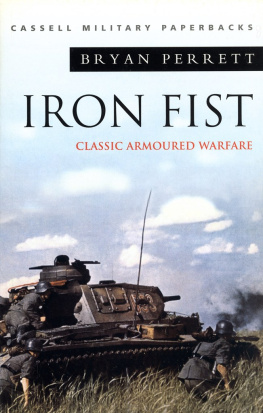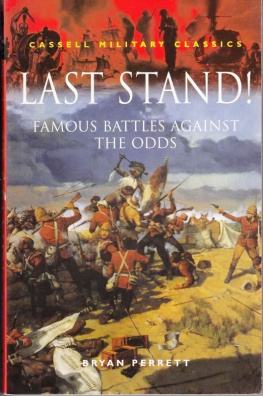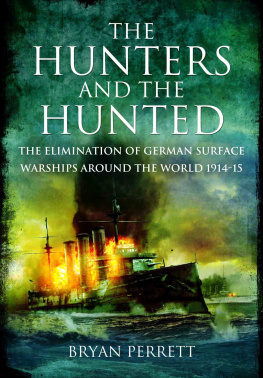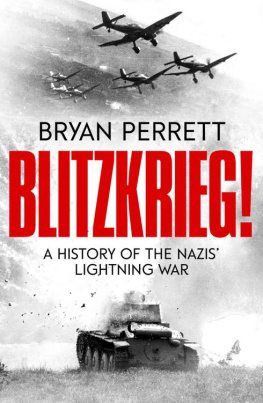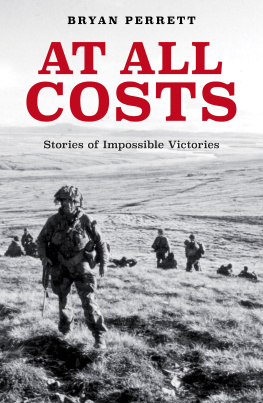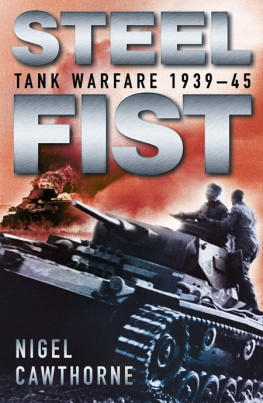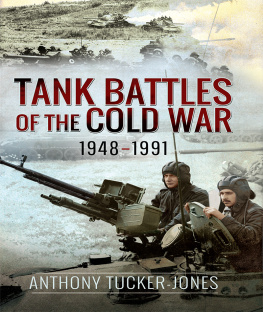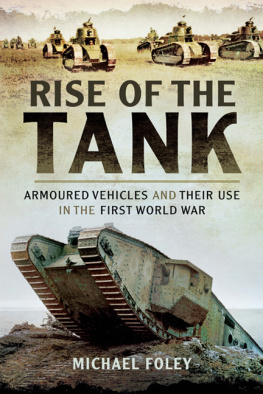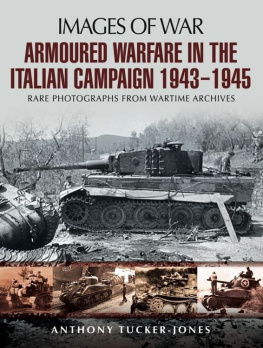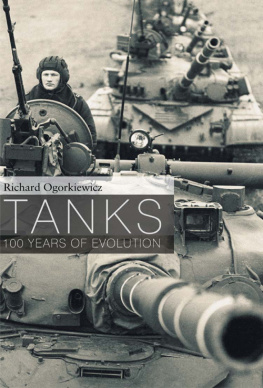Bryan Perrett - Iron Fist: Classic Armoured Warfare
Here you can read online Bryan Perrett - Iron Fist: Classic Armoured Warfare full text of the book (entire story) in english for free. Download pdf and epub, get meaning, cover and reviews about this ebook. City: London, year: 1999, publisher: Cassell, genre: History. Description of the work, (preface) as well as reviews are available. Best literature library LitArk.com created for fans of good reading and offers a wide selection of genres:
Romance novel
Science fiction
Adventure
Detective
Science
History
Home and family
Prose
Art
Politics
Computer
Non-fiction
Religion
Business
Children
Humor
Choose a favorite category and find really read worthwhile books. Enjoy immersion in the world of imagination, feel the emotions of the characters or learn something new for yourself, make an fascinating discovery.
- Book:Iron Fist: Classic Armoured Warfare
- Author:
- Publisher:Cassell
- Genre:
- Year:1999
- City:London
- Rating:3 / 5
- Favourites:Add to favourites
- Your mark:
- 60
- 1
- 2
- 3
- 4
- 5
Iron Fist: Classic Armoured Warfare: summary, description and annotation
We offer to read an annotation, description, summary or preface (depends on what the author of the book "Iron Fist: Classic Armoured Warfare" wrote himself). If you haven't found the necessary information about the book — write in the comments, we will try to find it.
Iron Fist: Classic Armoured Warfare — read online for free the complete book (whole text) full work
Below is the text of the book, divided by pages. System saving the place of the last page read, allows you to conveniently read the book "Iron Fist: Classic Armoured Warfare" online for free, without having to search again every time where you left off. Put a bookmark, and you can go to the page where you finished reading at any time.
Font size:
Interval:
Bookmark:
IRON FIST
CLASSIC ARMOURED WARFARE
BRYAN PERRETT
CASSELL&co
I should like to express my sincere appreciation and thanks to the following for their generous assistance: Major J. Charlton-Jones, The Queens Own Yeomanry; David Fletcher of the Tank Museum, Bovington; Mr Nicholas Forder, Derby City Council Museum and Art Gallery; Colonel Paul Gaujac, Chef du Service Historique de lArme de Terre, Vincennes; Hauptmann Gercke, Panzerbataillon 84, German Army; Lieutenant Colonel D. J. K. German and Major J. J. Eadie, Museum of the Staffordshire Yeomanry, Stafford; Mr Gareth S. Gill, Curator, 1st The Queens Dragoon Guards Regimental Museum, Cardiff; Colonel M. B. Haycock, The Warwickshire Yeomanry Museum, Warwick; Major A. W. Kersting, The Household Cavalry Museum, Windsor; Oberstleutnant Joh. Kindler, Militargeschichtliches Forschungsamt, German Army; Lieutenant Colonel R. B. Merton, Lieutenant Colonel A. R. D. Shirreff, Major D. A. J. Williams and Captain S. T. W. Bridge, The Kings Royal Hussars; Oberstleutnant Paprotka, Wehrgeschichtliches Museum, Rastatt; Mr John M. Purdy and SFC John T. Broom of the Patton Museum of Cavalry and Armor, Fort Knox, Kentucky; and to Pan Macmillan and Penguin USA for permission to use the passage quoted from Alistair Hornes To Lose a Battle on .
A s with every area of human activity, the evolution of armoured warfare over the past 90 years has been a process of continual learning and, within this, one of the most important elements has been what might be called in jargon the man-machine interface. To say that the fighting vehicle and its crew are complementary is, on the one hand, an absurd over-statement of the obvious yet, on the other, the relationship does extend well beyond the bounds of simple ergonomics. From the very beginning a dialogue has existed between the user and the designer. For example, during the first weeks of World War I the crews of the Belgian and Royal Naval Air Service touring cars requested the protection of armour plate; the latter also requested fully-rotating turrets in which to mount their machine-guns, a most important development although the idea was far from new. Simultaneously, there developed a second dialogue, that between the user and those under whose orders he operated. This considered such factors as the vehicles limitations, the terrain to be fought over, and the threat posed by the enemys probable response. Together, these influences have been reflected in the design of successive generations of fighting vehicles ever since. Until comparatively recent times, the story has been one of reaction to events, with users often having to wait months or years for the improvements or new vehicles which their experience had indicated were essential; and, of course, when these did reach the front, history had often moved forward a step or two. Thus, the crews who took the Tank Mark I into action in September 1916 would have given their eye teeth for the modifications incorporated in the Tank Mark V of 1918; the tanks of 1945 looked nothing like those of 1939 and had been designed with very different requirements in mind; and the veteran of World War II, entering a modern tank, finds that it incorporates systems that in his youth were regarded as belonging to the realms of science fiction.
My intentions in writing this book, therefore, have been to show how the vehicles themselves and the tactics employed were developed in the light of the crews experience, and in so doing give the reader some impression of what the tactical tank battle looked like from the inside as it evolved over the years. The method I have employed has been to select one or more episodes from each of the critical periods of history and place the emphasis on the human dimension of these. The higher thought processes of armoured warfare, the strategy and the more technical aspects of the subject have all received extensive coverage elsewhere and have only been included insofar as they are relevant to each episode.
I have devoted what I believe to be the appropriate amount of space to World War I for the very good reason that while the tank was originally conceived as a tool of trench warfare its use stimulated ideas among far-sighted officers who recognised its full potential. Likewise, each action fought during those early days added a paragraph to the hitherto blank page of experience.
Even so, on the outbreak of World War II only two armies, the British and German, had evolved clear-cut ideas as to how armoured formations could be used as a striking force within their own right. The former, thanks to years of political neglect, was temporarily hamstrung; the latter was not and quickly defeated Poland and the Western Allies in turn. Despite this, the German High Command was acutely aware of the risks involved and extremely sensitive to any check it received. Thus, if the tank battles in the Gembloux Gap and at Flavion had resulted in French victories, the 1940 campaign in the west would almost certainly have followed a different course.
In 1941 Hitler rashly decided to attack the Soviet Union. His armoured troops had become masters of the tactical battle yet, to their horror, they discovered that the latest generation of Russian tanks were superior to their own. From such encounters as that at Raseiniai and the untidy tank mle at Brody-Dubno grew a spiral contest between opposing designers in which bigger guns were fitted to penetrate thicker armour, which was then made thicker still, requiring yet larger guns, and so on.
So much has been written about the campaign in North Africa that I decided that no fresh lessons could be learned by retelling yet again the stories of Operations Compass and Crusader or the Battle of Gazala. Instead, I have chosen to examine the action Tel el Aqqaqir in some detail, partly because it was the climactic event of the Second Battle of Alamein, and partly because, as a breakthrough/breakout battle, it attracted considerable study while planning was in progress for the land warfare phase of the recent Gulf War.
On the Russian Front, the pendulum swung irrevocably against Germany in 1943. Hitlers attack on the heavily fortified salient at Kursk produced the greatest tank battle in history, but the only result was to lose Germany tanks she could ill afford. Thereafter, neither the tactical expertise shown by the Germans in the bitter actions around Kharkov and in numerous cauldron battles, nor the horrific casualties sustained by the Russians, could prevent the huge Red Army grinding its way onwards into Central Europe.
While mentioning some of the difficulties experienced in conducting armoured warfare in Normandy, I also reached the reluctant conclusion that including the oft-told stories of Epsom and Goodwood would merely emphasise these and add little else. On the other hand, assault engineering was an area in which the British Army excelled and the story of 79th Armoured Division, otherwise known as Hobos Funnies, from D Day until the end of the war in north-west Europe, is certainly a subject that repays study.
Italy was another area where terrain inhibited the free use of tanks. Here, as I have indicated in describing one of the actions required to break through the Gothic Line, they became first among equals in closely integrated all-arms assault teams, perhaps to a greater degree than in any other theatre of war.
Whereas in World War I the armoured car had been uncompromisingly regarded as a fighting vehicle, during World War II its most potent weapon was its radio and I have included a chapter to illustrate the point.
Once the Normandy Campaign had been concluded the scale of the US Armys contribution ensured that it became the senior partner in the land war in western Europe. Tempting as it was to describe American armoured divisions cutting their swathes across France and Germany, this would, given that cumulative experience is the theme of this book, simply have duplicated much that has been said above. Conversely, any army under pressure reveals its real worth, and this was true of the US Army during the first days of the Battle of the Bulge. There is much that can be learned from the series of Checks imposed by small teams of tanks and tank destroyers on the German spearheads approaching Bastogne, the combined effect of which was to win the time in which this vital road junction could be secured against capture.
Next pageFont size:
Interval:
Bookmark:
Similar books «Iron Fist: Classic Armoured Warfare»
Look at similar books to Iron Fist: Classic Armoured Warfare. We have selected literature similar in name and meaning in the hope of providing readers with more options to find new, interesting, not yet read works.
Discussion, reviews of the book Iron Fist: Classic Armoured Warfare and just readers' own opinions. Leave your comments, write what you think about the work, its meaning or the main characters. Specify what exactly you liked and what you didn't like, and why you think so.

